Emulate your own mainframe computer with MVS-TK5
Introduction
For those interested in exploring mainframe computing, the MVS-TK5 package provides a turnkey environment to emulate IBM’s MVS operating system on your personal computer [1].
Paired with the Hercules emulator, this setup allows you to experiment with a simulated mainframe environment without needing access to expensive hardware. Here’s a technical guide to get started.
What Is Hercules and MVS-TK5?
Hercules is an open-source software emulator that allows you to simulate IBM mainframe hardware on a modern computer [2].
MVS-TK5 is a package that integrates Hercules with a ready-to-run version of the MVS 3.8j operating system, a classic version of IBM’s MVS (Multiple Virtual Storage) system.
The combination of Hercules and MVS-TK5 offers an accessible way to learn about mainframe architecture and operating systems, practice skills useful for working on legacy systems and explore historical computing technologies in a hands-on manner.
MVS-TK5 Installation Guide
Here’s a step-by-step guide to setting up MVS-TK5 with Hercules on your computer:
(1) Download the MVS-TK5 Package
You can download the MVS-TK5 package here.
(2) Extract the Files
Unzip the downloaded package to a directory of your choice. The mvs-tk5 folder will typically contain:
- The Hercules emulator.
- MVS-TK5 system files, including DASD (Direct Access Storage Device) images.
- Configuration files and documentation.
(3) Boot the MVS System
Start MVS by executing the batch or script file provided in the package - mvs.bat on Windows or mvs shell script on Linux or macOS.
You’ll see the MVS system loading in the console window. This process may take a few minutes. Once completed, you should see the following message:
Script 5: file scripts/tk5.rc processing ended

What is TSO?
TSO, or Time Sharing Option, is a key component of the MVS operating system. It allows multiple users to access and interact with the mainframe concurrently in a time-sharing environment. With TSO, users can log into the system, execute commands, edit datasets, and submit jobs using a command-line interface.
One of TSO’s most powerful features is its integration with the Interactive System Productivity Facility (ISPF), which provides a menu-driven interface for various administrative and development tasks.
TSO and ISPF are essential tools for mainframe users to navigate the system and perform day-to-day operations.
How to access the MVS System
Once the MVS system is up and running, you can access it using a terminal emulator. x3270 is a popular terminal emulator used to access and interact with mainframe systems via the TN3270 protocol [3]. x3270 is available in several different forms, including wc3270, a Windows version of the emulator.
Follow these steps to connect to the MVS system using wc3270:
- Download and install wc3270 from here.
- Launch wc3270, type
open localhost:3270and hit Enter. - You should now see the mainframe login screen as shown below.
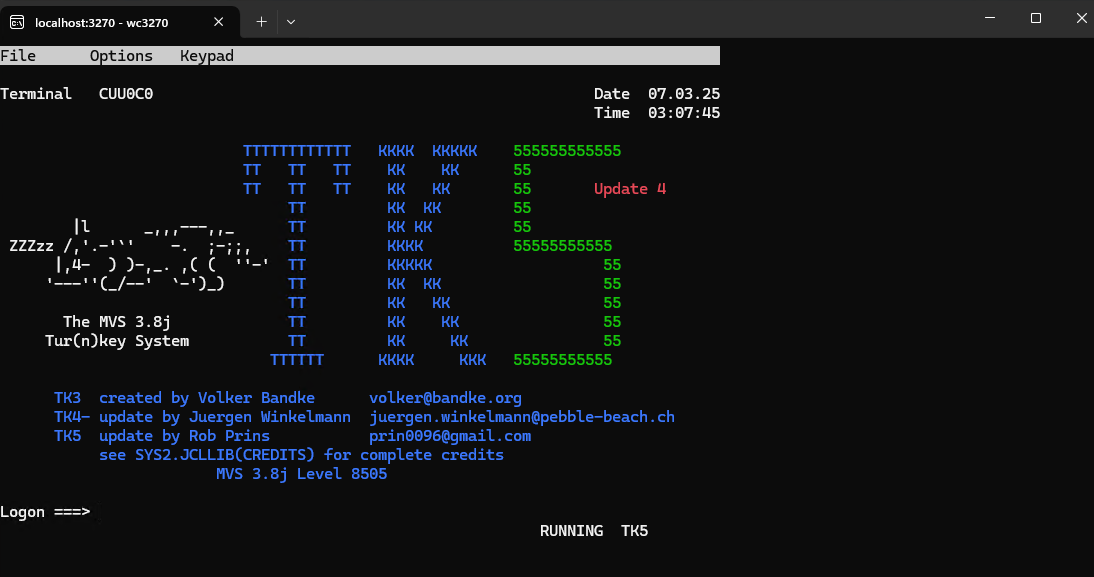
Note If the text appears garbled or unreadable, try maximizing the wc3270 window to adjust the display settings. This issue can occur due to the default font size or window dimensions.
- Type
HERC01for the username and press Enter. - Type the default password
CUL8TRand press Enter. - Hit Enter key a couple of times to bypass the initial messages.
- You should now see the ISPF screen as shown below.

Testing COBOL Programs
MVS-TK5 includes sample COBOL programs that you can compile and run to familiarize yourself with mainframe development.
To test a COBOL program, follow these steps:
From the ISPF main menu, select M to access TSOAPPLS.

Select option 1 to access the RFE (Review Front End) tool.
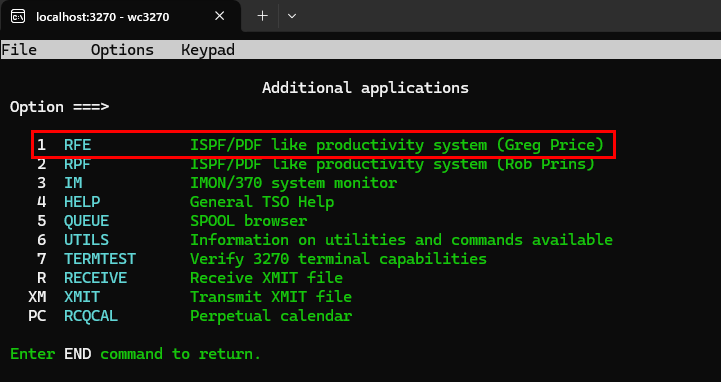
Select option 3 to access Utilites.
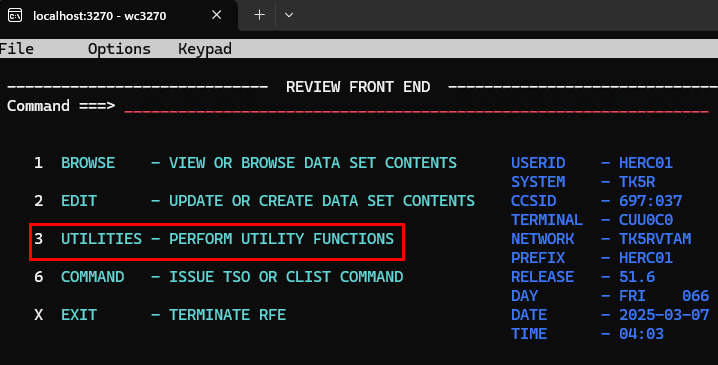
Select option 4 to access DSLIST (data set list).

Type SYS2 for Data set name prefix and hit Enter.
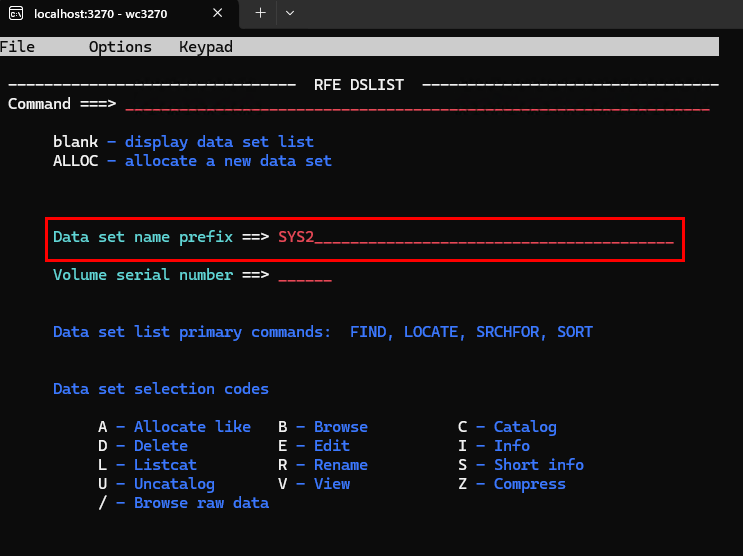
Use the down arrow key to navigate to SYS2.JCLIB, press V, then hit Enter to view the data set.
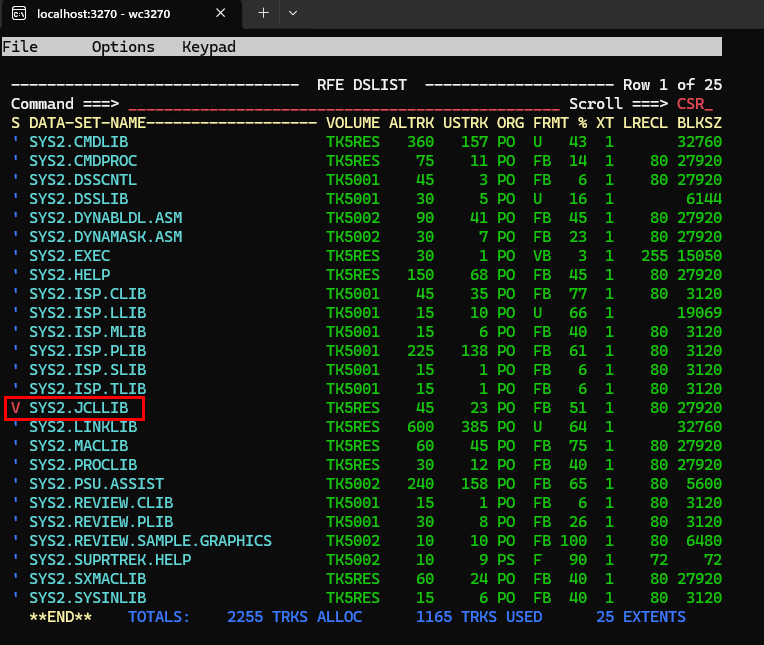
Use the F8 key to scroll down. Find the sample COBOL program called TESTCOB. Press the V key, then press Enter to view the file.

Type SUBMIT in the Command field, then hit Enter.
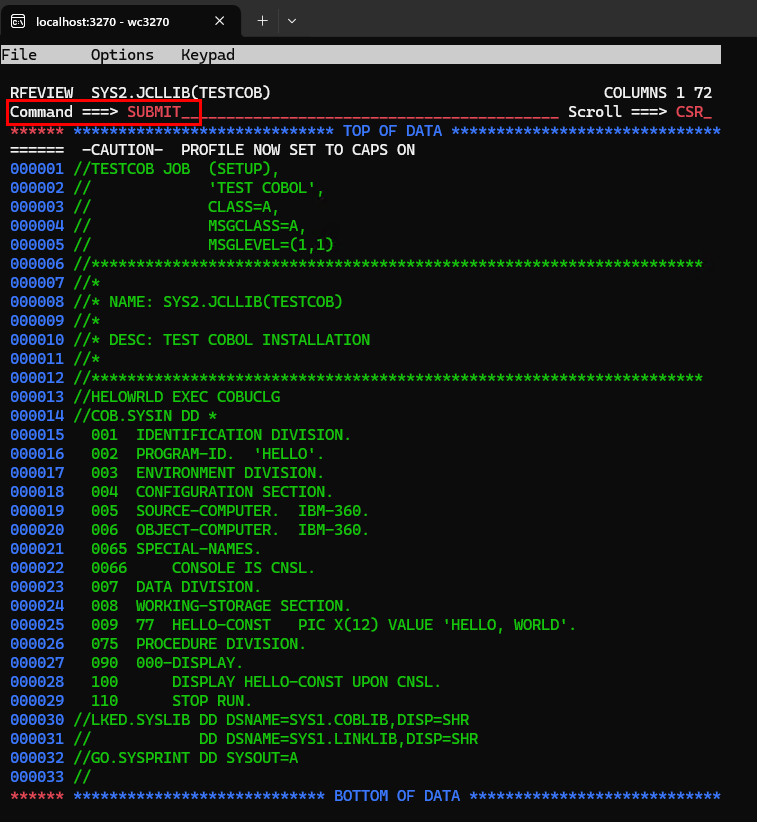
You should see the output of the COBOL program in the Hercules - System Status window, shown on the left hand side.
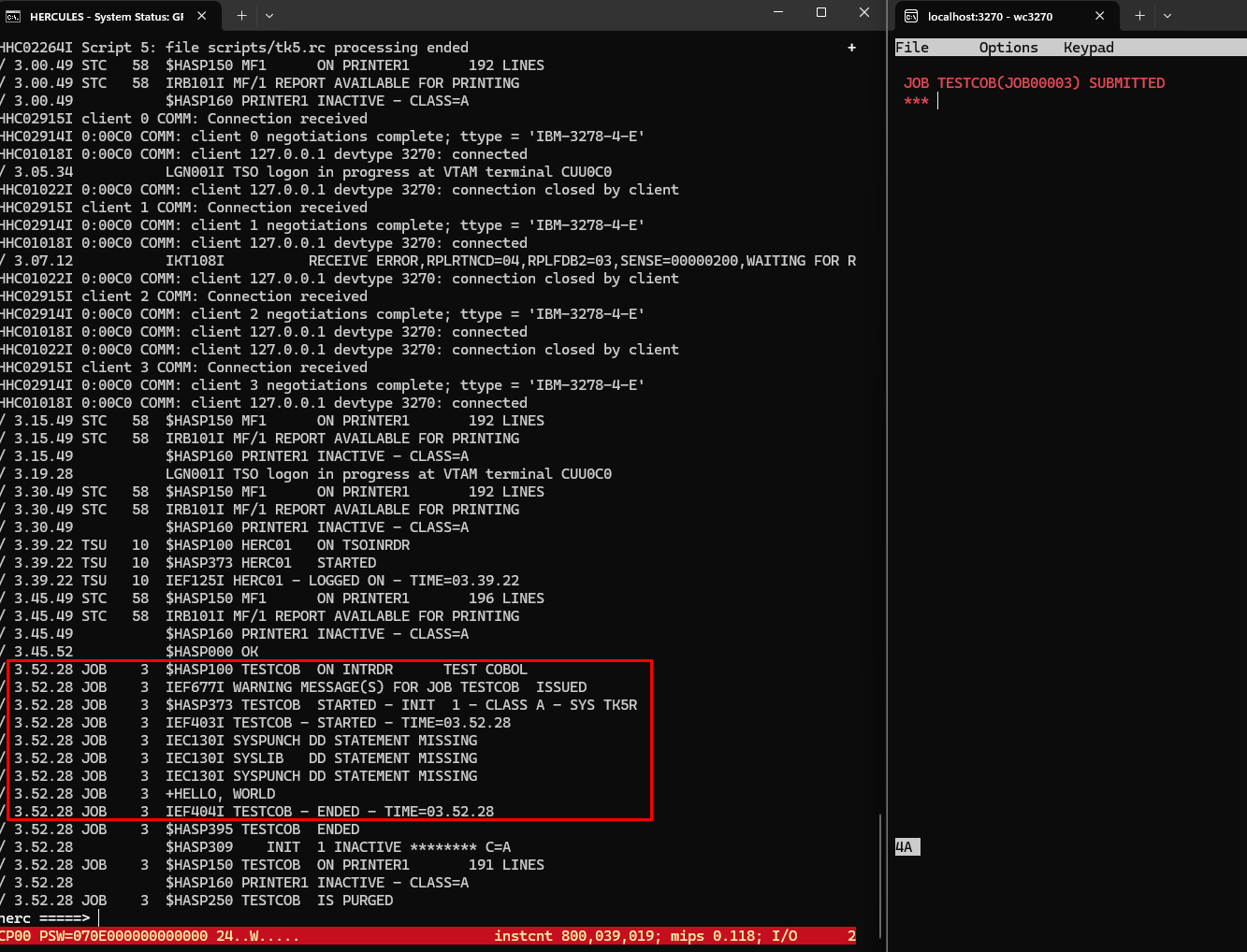
Conclusion
Emulating a mainframe with MVS-TK5 and Hercules provides an easy way to explore the architecture and operations of a traditional IBM mainframe system. By following the setup process, you gain a functional environment to experiment with JCL, TSO, ISPF, and legacy programming languages like COBOL. This hands-on experience offers valuable insights into the foundational technologies that continue to influence modern enterprise computing. For further exploration, you can check out the documentation included with MVS-TK5.
References
[2] The Hercules System/370, ESA/390, and z/Architecture Emulator
[4] Introduction to the New Mainframe: z/OS Basics
[5] COBOL programming - tutorials, lectures, exercises, examples
[6] Using the function keys and command line with the ISPF control panels on z/OS
Appendix
/s shutdown to shutdown system from Hercules status window
logon herc01 recon to reconnect to existing session
F3 to return to previous ISPF panel
Shift + Esc to exit wc3270 terminal emulator